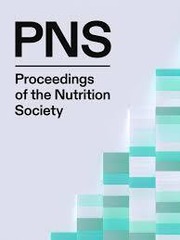Hypertension is a major public health challenge and an important risk factor for cardiovascular disease (CVD). According to the 2017 American College of Cardiology/American Heart Association ACC/AHA Guideline definitions, the overall prevalence of hypertension in US adults was 45·6%(Reference Muntner, Carey and Gidding1). Lifestyle interventions form the cornerstone of high blood pressure therapy(Reference O'Connell2). Increased fruit and vegetable (FV) intake has been associated with reduced blood pressure (BP)(Reference Saneei, Salehi-Abargouei and Esmaillzadeh3), but it is less clear whether this association depends on type of FV.
This study aimed to examine the cross-sectional association between overall FV intake and specific types of FV (citrus fruit, other fruit, fruit juice, cooked vegetables and raw vegetables) and BP in France and Northern Ireland.
A total of 10660 men aged 50–59 years were recruited from 1991 to 1993. BP was measured in a clinic setting, and dietary intake was assessed by a short food-frequency questionnaire. Statistical analysis (analysis of baseline characteristics and logistic regression) was performed by SPSS programme v22·0.
Baseline demographic characteristics differed between countries except systolic blood pressure. After adjusting for potential confounders, including age, country, socioeconomic variables and other CVD risk factors, the odds ratio for hypertension based on systolic blood pressure (>140 mmHg) per portion of fruit, vegetable and juice overall was 0·95 (CI% 0·91, 1·00), 0·93 (CI% 0·89, 0·98) per portion intake of other fruit, 0·86 (CI% 0·80, 0·91) per portion intake of raw vegetables, 0·98 (0·94, 1·02) per portion intake of citrus fruit, 1·02 (CI% 0·98, 1·06) per portion intake of fruit juice and 1·05 (CI% 0·99, 1·10) per portion intake of cooked vegetables. The odds ratio for hypertension based on diastolic BP (>90 mmHg) per portion intake of fruit, vegetables and juice was 0·94 (CI 0·90, 0·98), 0·90 (CI 0·85, 0·95) per portion intake of other fruit, 0·83 (CI 0·77, 0·89) per portion intake of raw vegetables, 0·99 (CI 0·95, 1·03) per portion intake of citrus fruit, 1·04 (CI 1·00, 1·08) per portion intake of fruit juice and 0·99 (CI 0·94, 1·05) per portion intake of cooked vegetables.
In conclusion, high intake of fruit, vegetable and juice overall, other fruit and raw vegetables was inversely associated with risk of hypertension, suggesting that the strength of the association between these fruit and vegetables classes and blood pressure might be related to the type consumed, or to processing or cooking-related factors.


